I woke up in my tent at the Davis Bayou Campground just before six and immediately wished I could spend the entire morning in bed and to hell with the zip-tugging racoons. Fortunately my right leg, which had been playing up for several days, hadn’t caused any issues during the night, but I’d woken in the early hours with a headache.
Fearing I was dehydrated I dashed to the nearby standpipe to fill my water bottle, but all that seemed to achieve was increasing the number of times I had to crawl out of the tent during the night. I kept imagining returning to find a racoon slumber party taking place on my rollmat, but it seemed even they needed to get some shut-eye.
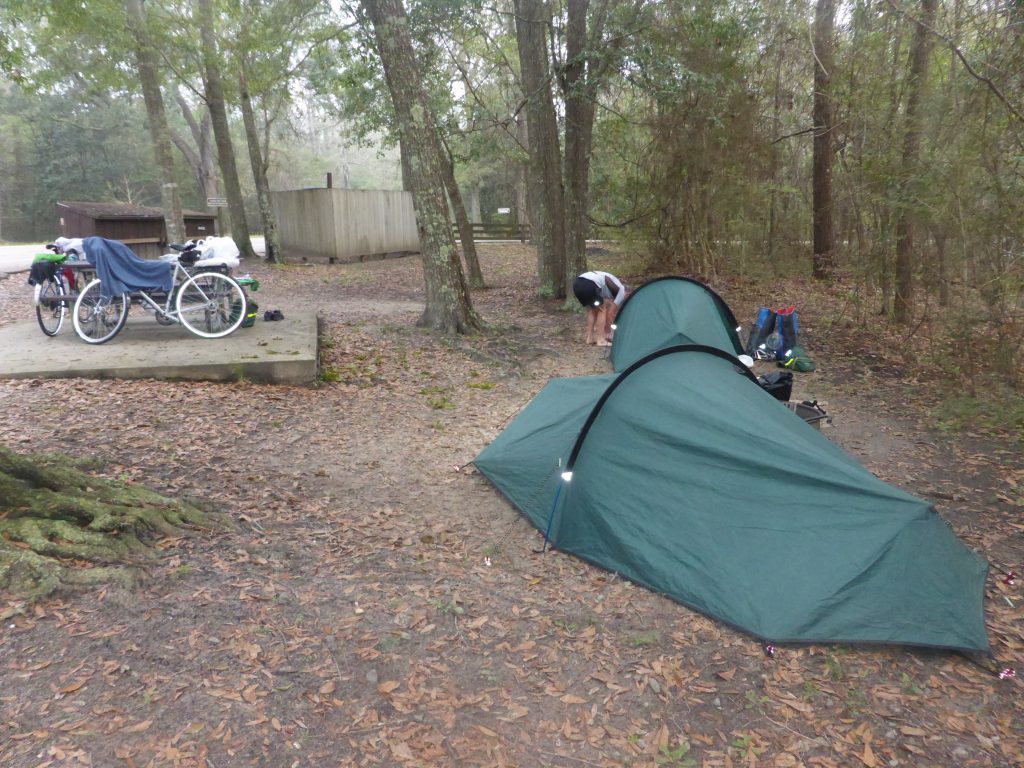
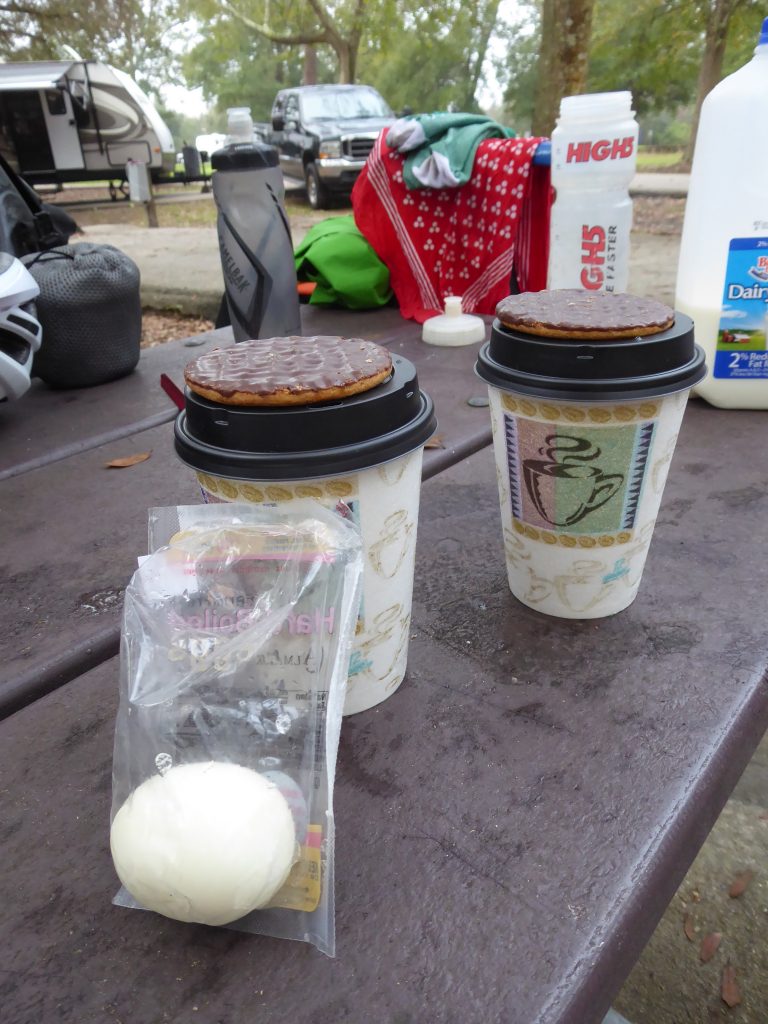
Laying there listening to the amazing birdsong of the dawn chorus, I began to feel better and improved further still when William wandered over and offered us coffee. He stayed chatting while we emptied and filled our panniers and did much to lift our spirits with his bonhomie and cheerfulness. When it was time to leave he shook our hands goodbye like we were old friends, rather than people he had only met the night before.
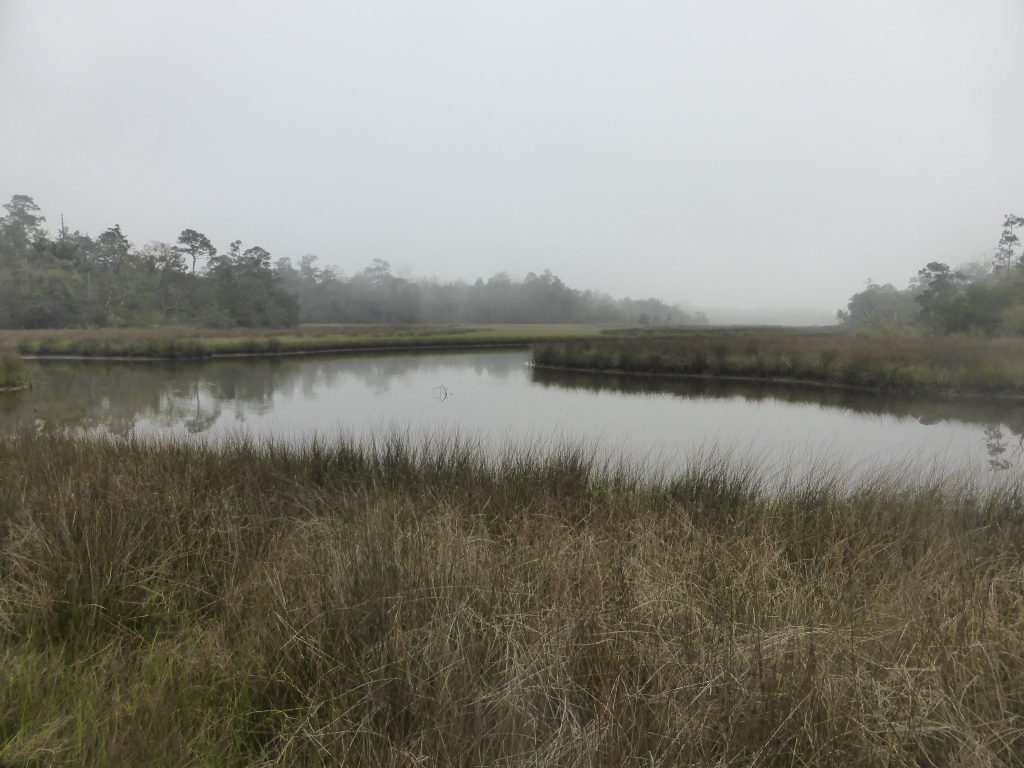
Now I don’t know about you, but whenever I think of the word ‘bayou’ a little voice in my head starts singing Jambalaya (On the Bayou). For me it’s always Karen Carpenters’ voice I hear, but for others it could be Hank Williams, Brenda Lee or Dolly Parton:
Jambalaya, crawfish pie and fillet gumbo
For tonight, I’m-a gonna see my ma cher a mi-o
Pick guitar, fill fruit jar and be gay-o
Son of a gun, we’ll have big fun on the bayou
Up until now I’ve not thought that much about what a bayou actually is. It always sounded rather exotic. In fact, its definition in the southern US is marshy outlet of a slow moving stream, lake or river and it’s thought to originate from the Choctaw word ‘bayuk’ which means small stream. I guess we’d call it a swamp, marsh, or salt marsh, which doesn’t sound quite so special. I can’t really picture Dolly warbling about meeting her sweetheart down the swamp.
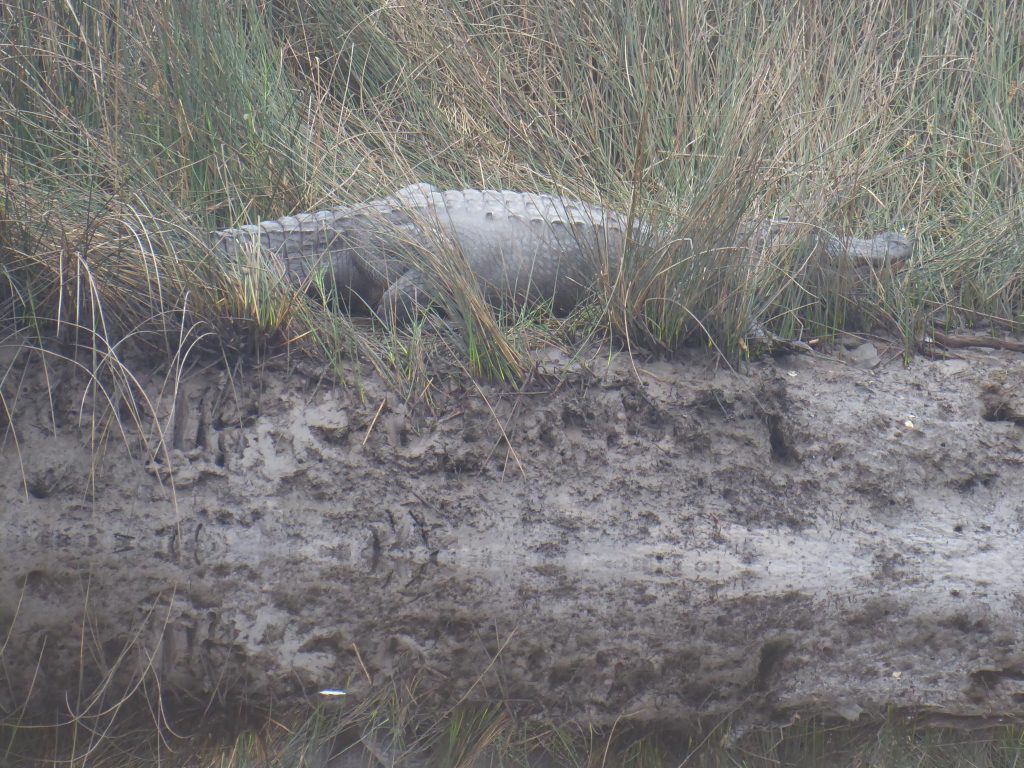
Anyway we couldn’t leave Davis Bayou without first looking out across the Bayou and we were rewarded with our first sighting of a Mississippi ‘gator. Then it was back on the 90 for a short hop before stopping off for breakfast.
It was to be a whole day off the ACA maps, which from experience we knew often ended in disaster, or at the very least, unsuitable road conditions. But today’s directions were straightforward enough – straight down the 90 to Biloxi from where we’d hug the coast all the way to the Bay of St Louis, cross the bridge and then onto Pearlington where we had booked into an RV park for the night.
After passing through Ocean Springs we crossed a road bridge to Biloxi where the shoulder disappeared and we were forced to navigate our way on the pavement past numerous giant casinos. Eventually the buildings died back and we rode along the promenade looking left upon mile upon mile of white sandy beaches along the Gulf Coast. I’d imagine in the summer they are packed, but at this time of year each person had a half mile section virtually to themselves.

The cycling was hard going, mainly due to the fact that the surface was made up of two metre long concrete panels, so every few seconds you were met with an annoying, energy sapping jolt. We could have cycled on the 90 itself, but that meant more traffic, so the jolts it was. Thump, ouch, thump, ouch, thump. It rather took the edge off the view.
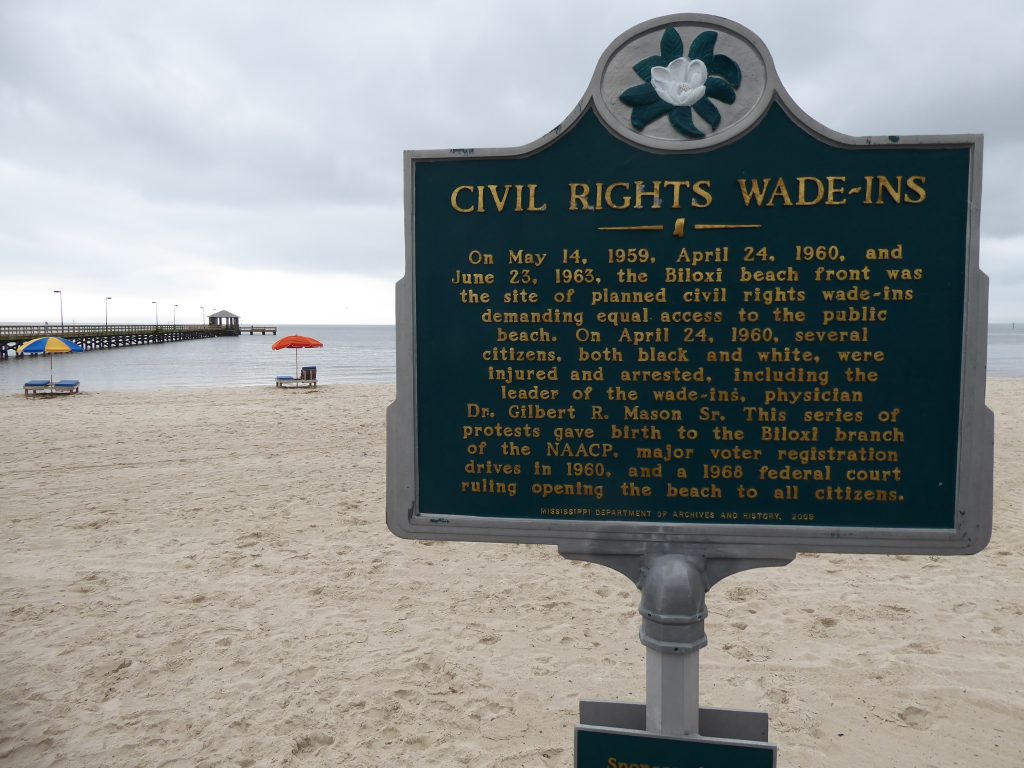
It was hard to believe that sixty years ago these beaches at Biloxi became battlegrounds as black protesters were attacked while demanding equal access. With Jim Crow laws banning black people from visiting the beach near their homes civil rights wade-ins were held on May 14th, 1959, April 24th 1960 and June 23rd 1963. During the 1960 protest several people, both black and white, were injured and arrested, including the leader of the wade-ins, Dr Gilbert R. Mason Sr.
It is reported that the wade-ins on Biloxi Beach were Mississippi’s first organised act of civil disobedience during the civil rights era. Following the 1960 protest, when the police were said to have stood by as white mobs attacked black beachgoers, including women and children, the African Americans in Biloxi formed a local chapter of the National Association for the Advancement of Colored People (NAACP). In 1967 the federal court ruled that the beach was open to all citiziens.
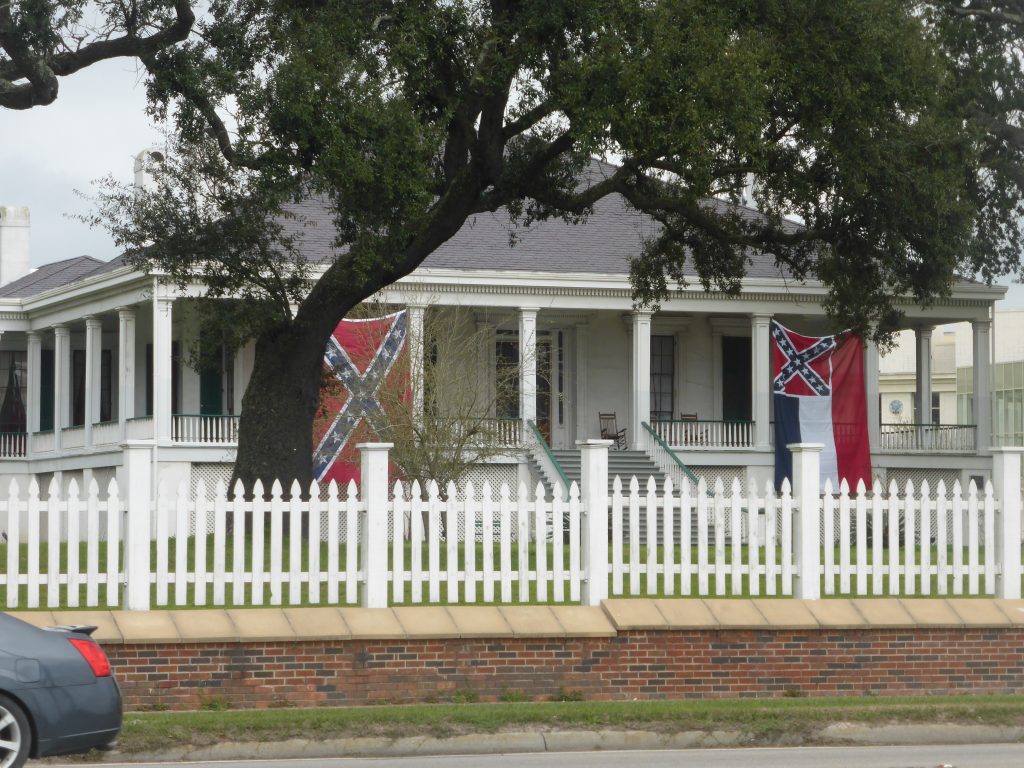
Today the only evidence of the fight for equal rights that took place here is a green commemorative sign. I can’t help feeling the sacrifice made by those civil rights activisits more than half a century ago deserves a little more recognition, not least to remind future generations that small freedoms like being able to go for a swim in your home town can be hard fought.
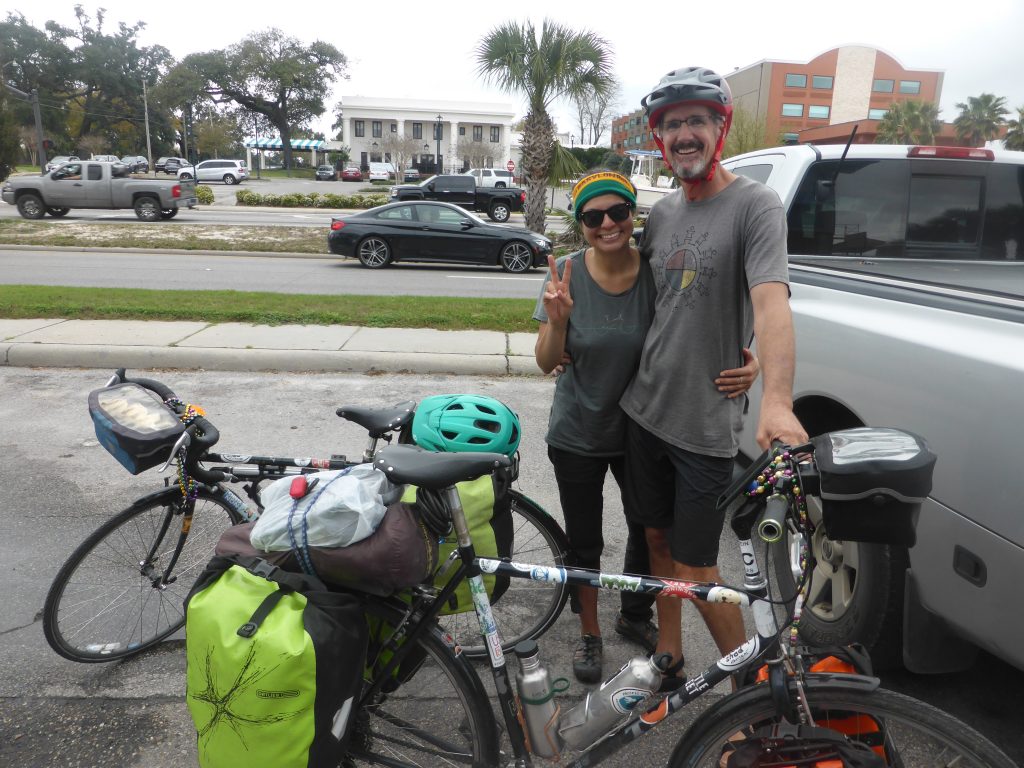
We’ve not met many cyclists on this journey so we were delighted to meet up with Jules and Harley from LA who were cycling from New Orleans to Florida. They had previously ridden from New York to Seattle in a ride which had a strong environmental and sustainability theme – their next ride was to be across Europe.
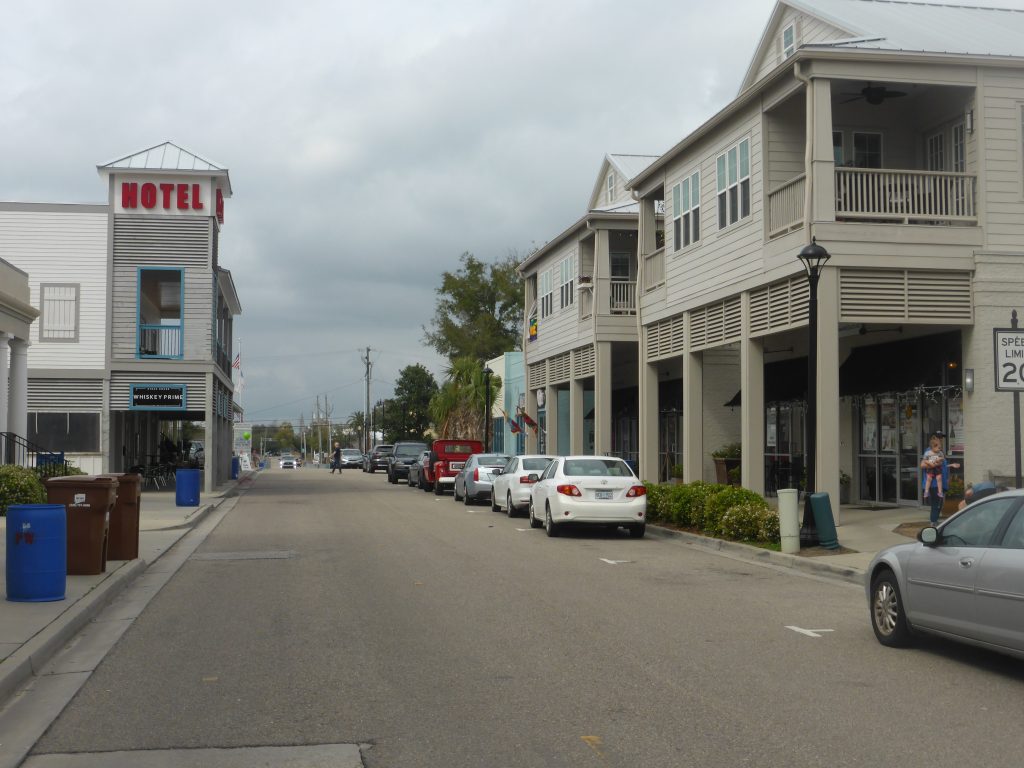
At Pass Christian we stopped off for a Subway lunch (our staple diet is veggie baguettes) and witnessed some of the devastation Hurricane Katrina had inflicted on the historic houses which had once stood here. At one time Pass Christian’s Scenic Drive had been heralded as the ‘Newport of the South’ with the historic district having the largest and best preserved beachfront manors on the Mississippi coast, including architecturally significant vacation villas set among live oaks. In 2005 Hurriance Katrina destroyed many of the historic buildings. Some had been rebuilt, but old photographs and the empty footprints of what had once been people’s homes, revealed how huge the loss had been.
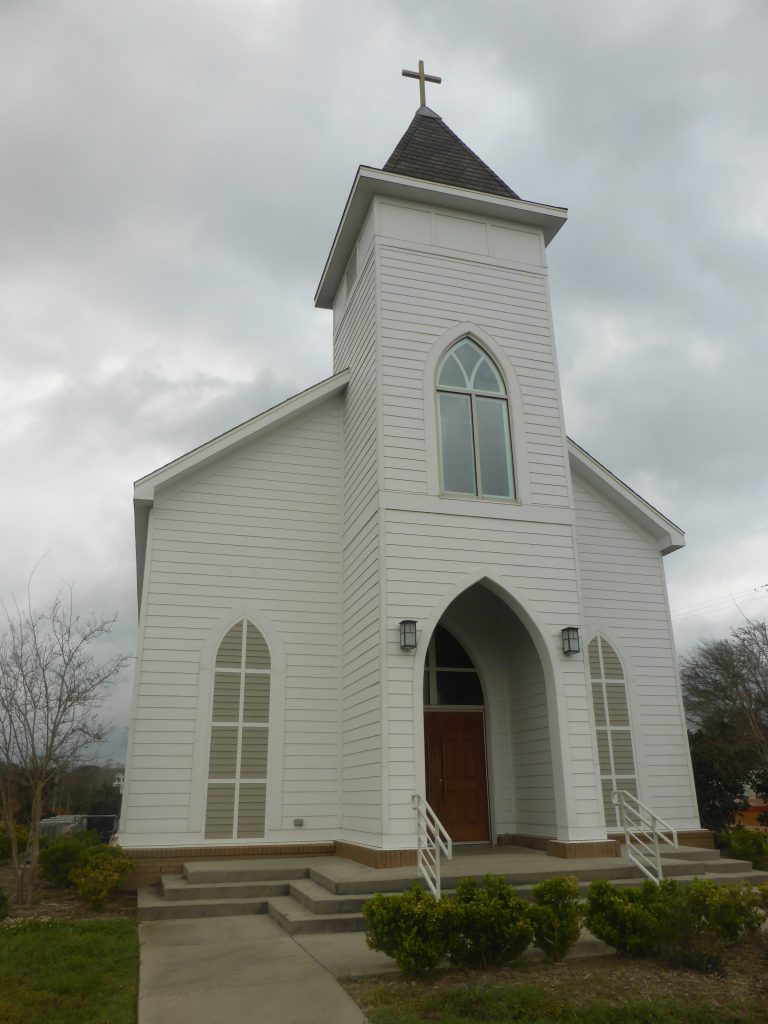
By some miracle it appeared that the St. Paul Catholic Church, with its white weatherboarding and short steeple had survived the devastation, until you looked closely at a nearby sign and realised this was the fourth church of St. Paul to stand on this spot along the Spanish Trail. The first, built in 1851, had been destroyed by fire in 1876. The second, built in 1879 was seriously damaged by Hurricane Camille in 1969. The third only lasted from 1972 to 2005 when it was hit by Katrina. The current church, which we’d assumed was original, was only four years old, built in 2015 and was a replica of the second church to carry the name. How long it survives is anyone’s guess.
Eventually we gave up on the pavement riding and opted for the now quiet – and well surfaced 90. Another huge and steeply inclined bridge took us over the Bay of St Louis and had an excellent cycle and pedestrian lane, which was proving popular with the local jogging population. Our Garmin profile showed we’d climbed 515ft today – and like most days so far nearly all of that height gain was going over these enormous bridges.
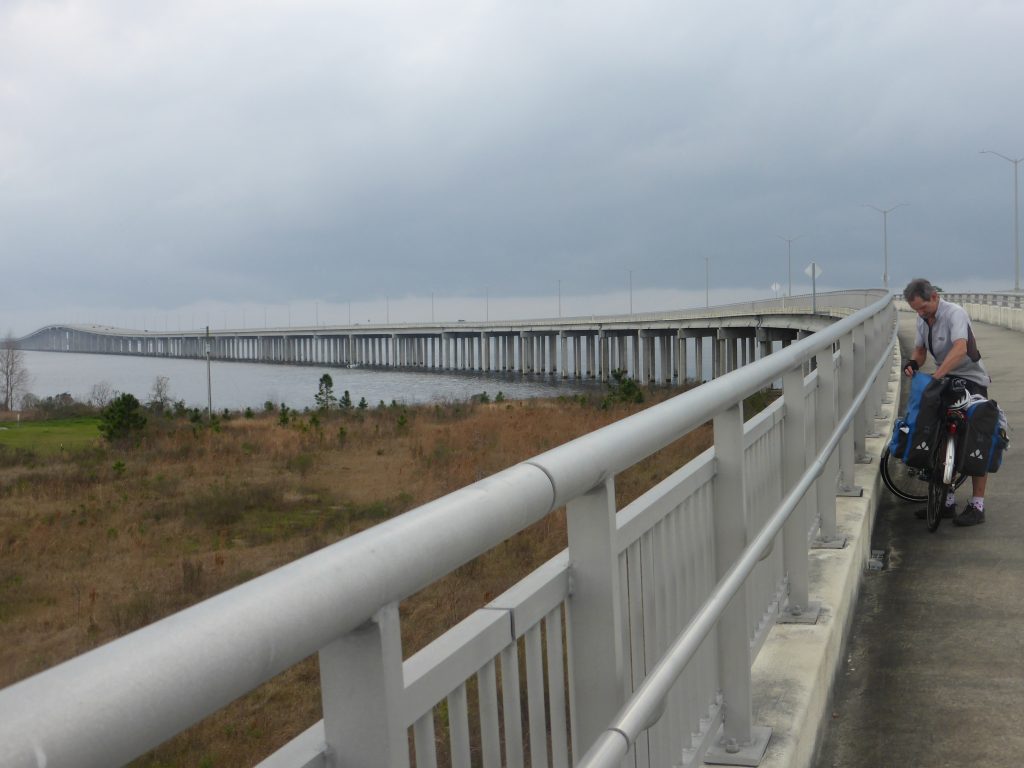
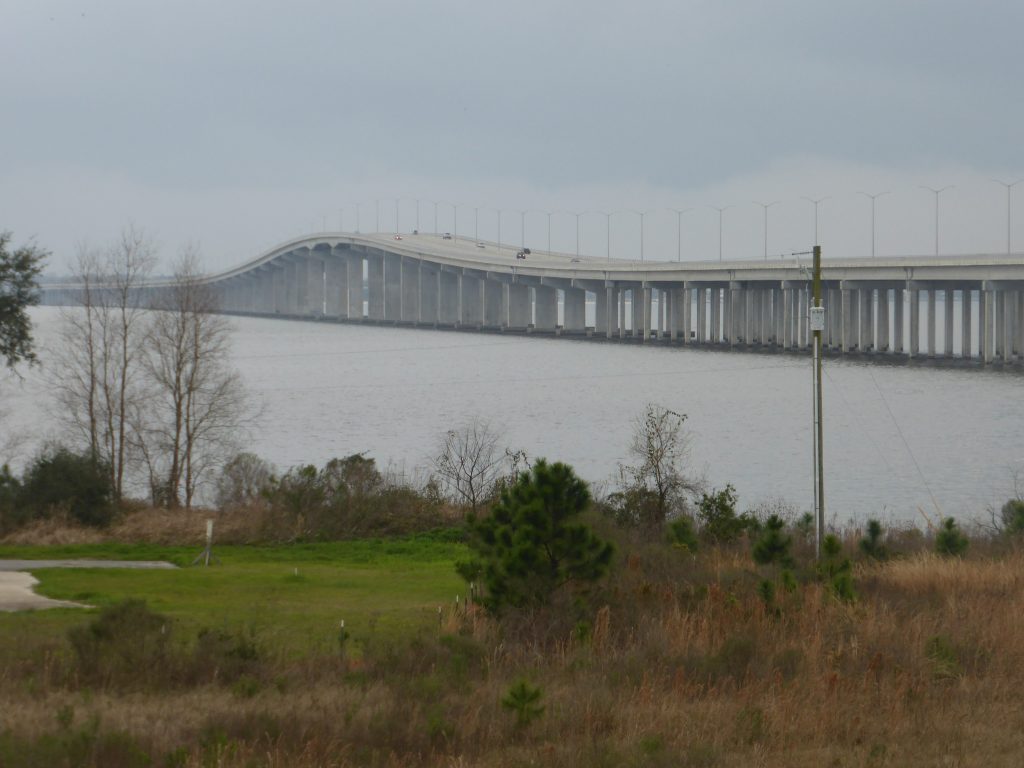
Then it was more sandy beaches before turning inland and up to our campsite, fronted by a 90 which has now been tamed into a quiet single laned highway with all it’s thunder stolen by Interstate 10. If only it could have behaved this well in Florida.
It appeared the sun had gone down on The Sunrise RV campsite a few years before. Situated on the boggiest ground around for miles it seem to comprise of mostly semi-permanent RVs and mobile homes gathered around its only facility – the laundry. We eventually squelched our way to some slightly higher ground and pitched our tents before cooking up some Ramen and spending a rip roaring Saturday night in the launderette washing our increasingly offensive clothing.
Terry’s view on the campsite: “The RV Camp is well dodgy … Hicksville, soggy ground and no showers. But it does have a laundromat with wi-fi!!” I think he’s got it about right there.
But the good news is we are only 40 miles from New Orleans where tomorrow night we’ll be staying in the Marriot Hotel on Canal Street in the heart of the French Quarter. Bring it on!
Today’s miles: 54.8
Total distance since Anastasia State Park: 697.38
